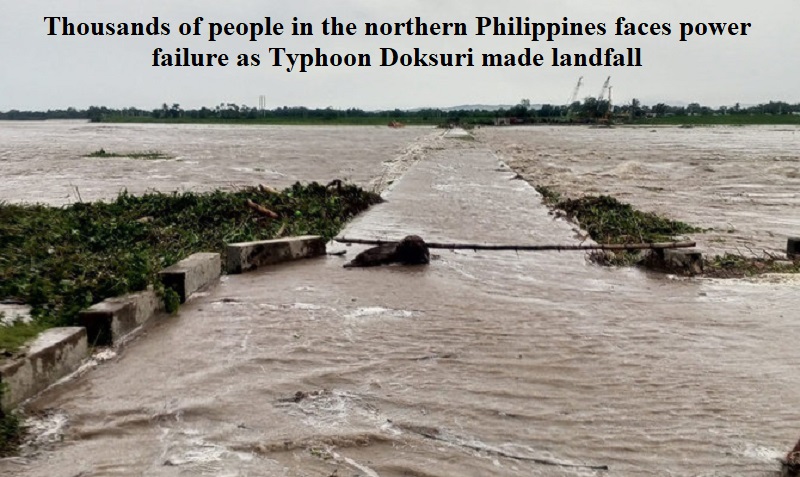
Typhoon Doksuri struck the northern Philippines on July 26, leaving thousands of people without electricity. Residents in coastal communities were evacuated before the storm’s arrival. Governor Manual Mamba of the northern Cagayan province reported that they were being heavily affected but so far, there were no casualties.
The typhoon brought powerful winds of up to 175 kilometers per hour and is anticipated to maintain its strength as it heads towards Taiwan and China. Due to the storm, over 4,000 passengers were left stranded at various ports across the Philippines, as sea travel was suspended.
This is the fifth storm to hit the Philippines this year, and storm warnings were issued for multiple areas on the northern island of Luzon, which houses approximately half of the country’s population. Authorities have warned of potential storm surges, landslides, and damage to infrastructure.
Initially classified as a super typhoon, Doksuri weakened slightly on Wednesday. It also brought heavy rainfall to southern Taiwan, leading to land warnings for several counties and cities in the region. As a precaution, more than 300 people were evacuated in southern and eastern Taiwan.
In response to the typhoon, nearly 50 domestic flights and four international flights, along with numerous ferry lines, were cancelled. Additionally, railway services between eastern and southern Taiwan were suspended from Wednesday evening.
Doksuri is projected to make landfall in China’s Fujian province on Friday. China’s southeast Fujian province urged fishing boats to seek shelter, as Doksuri is expected to be the most powerful typhoon to hit the country during this year’s storm season. The National Meteorological Center of China indicated that the typhoon is likely to make landfall somewhere between Fujian and Guangdong provinces.

Post Your Comments